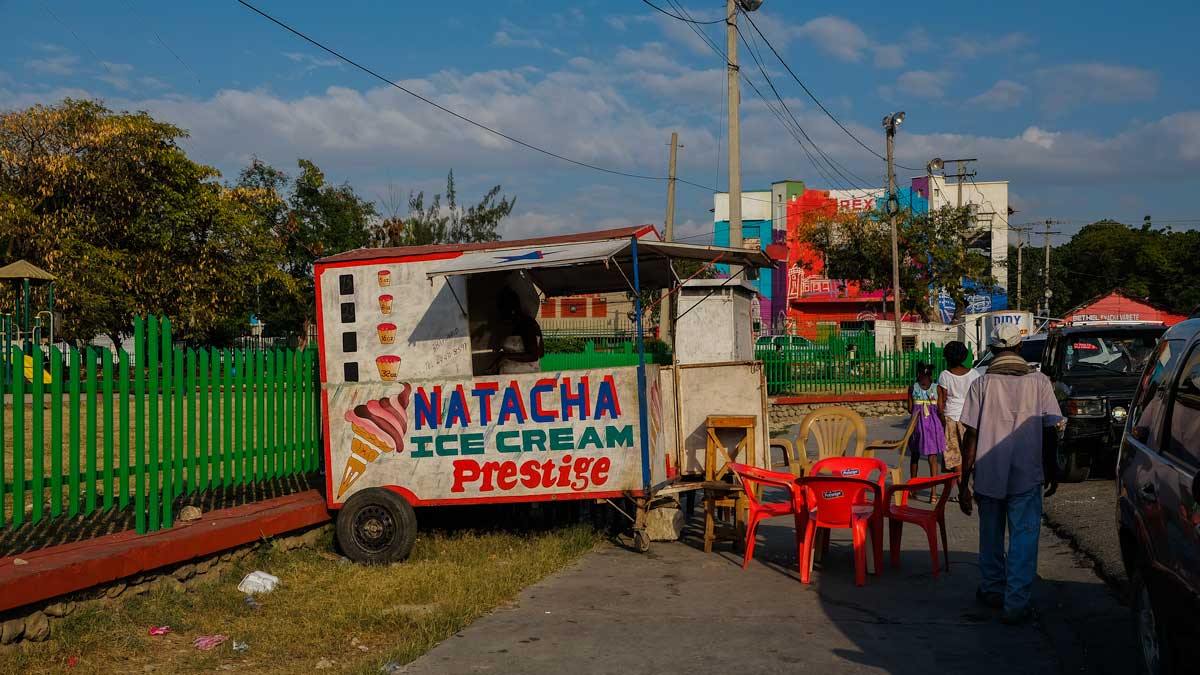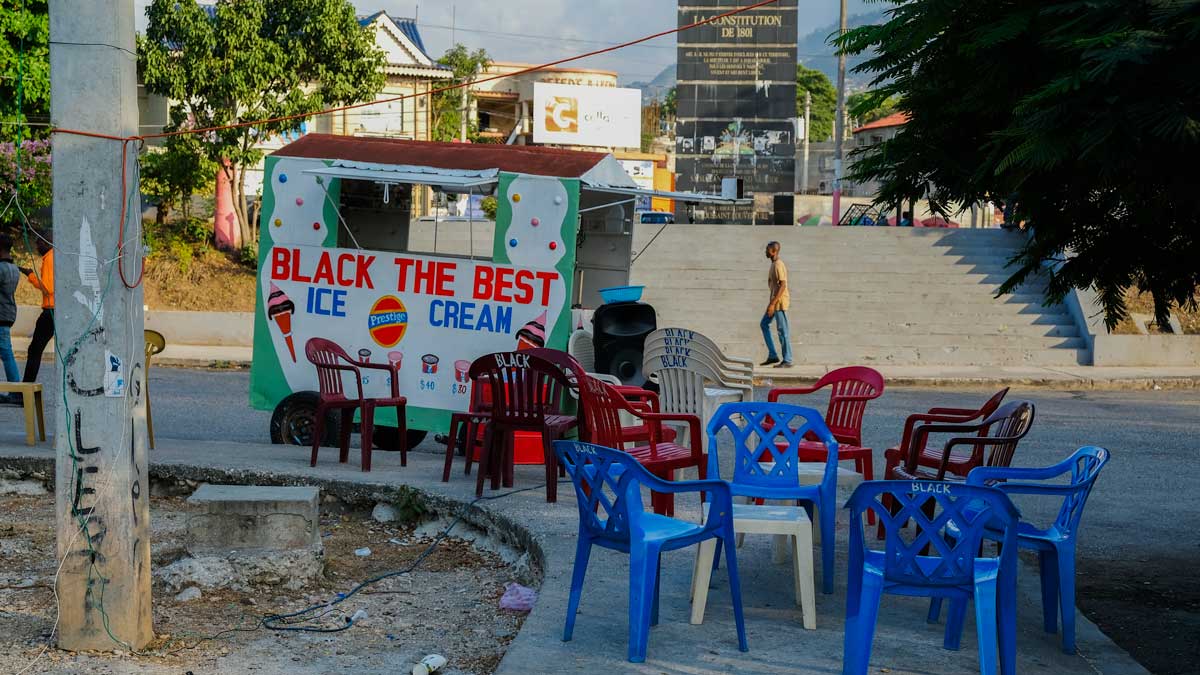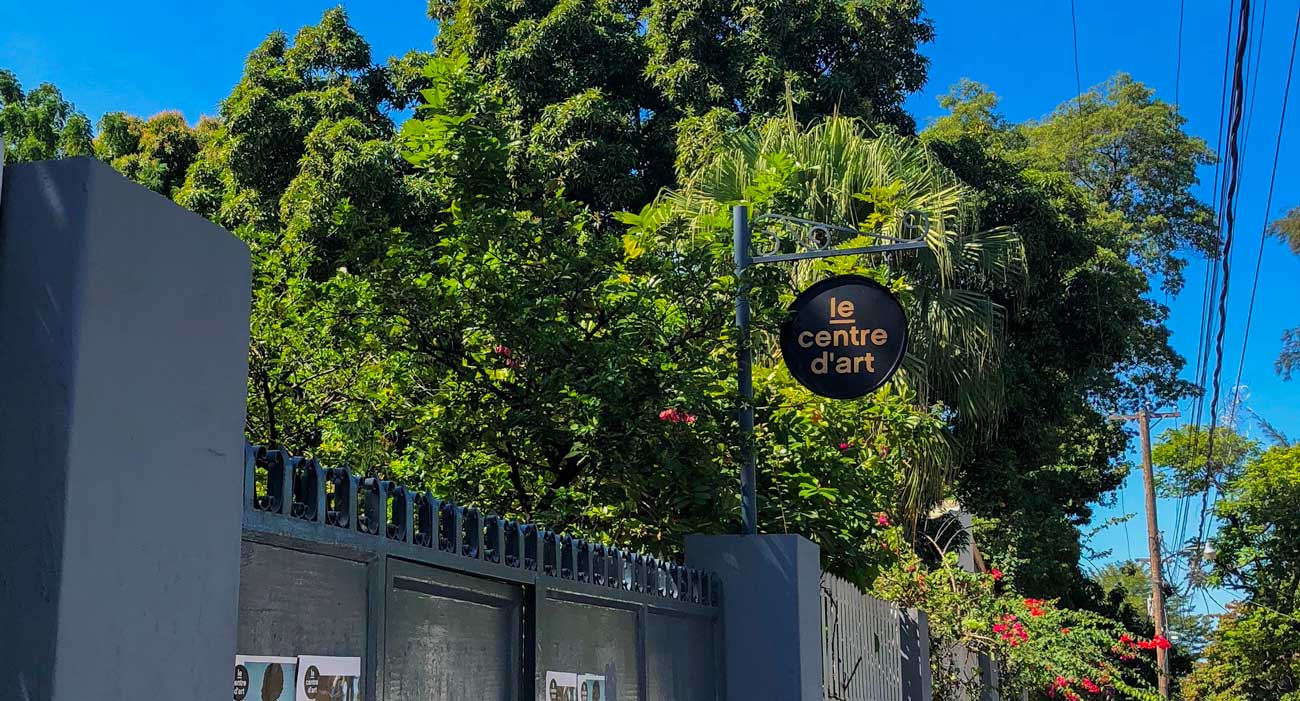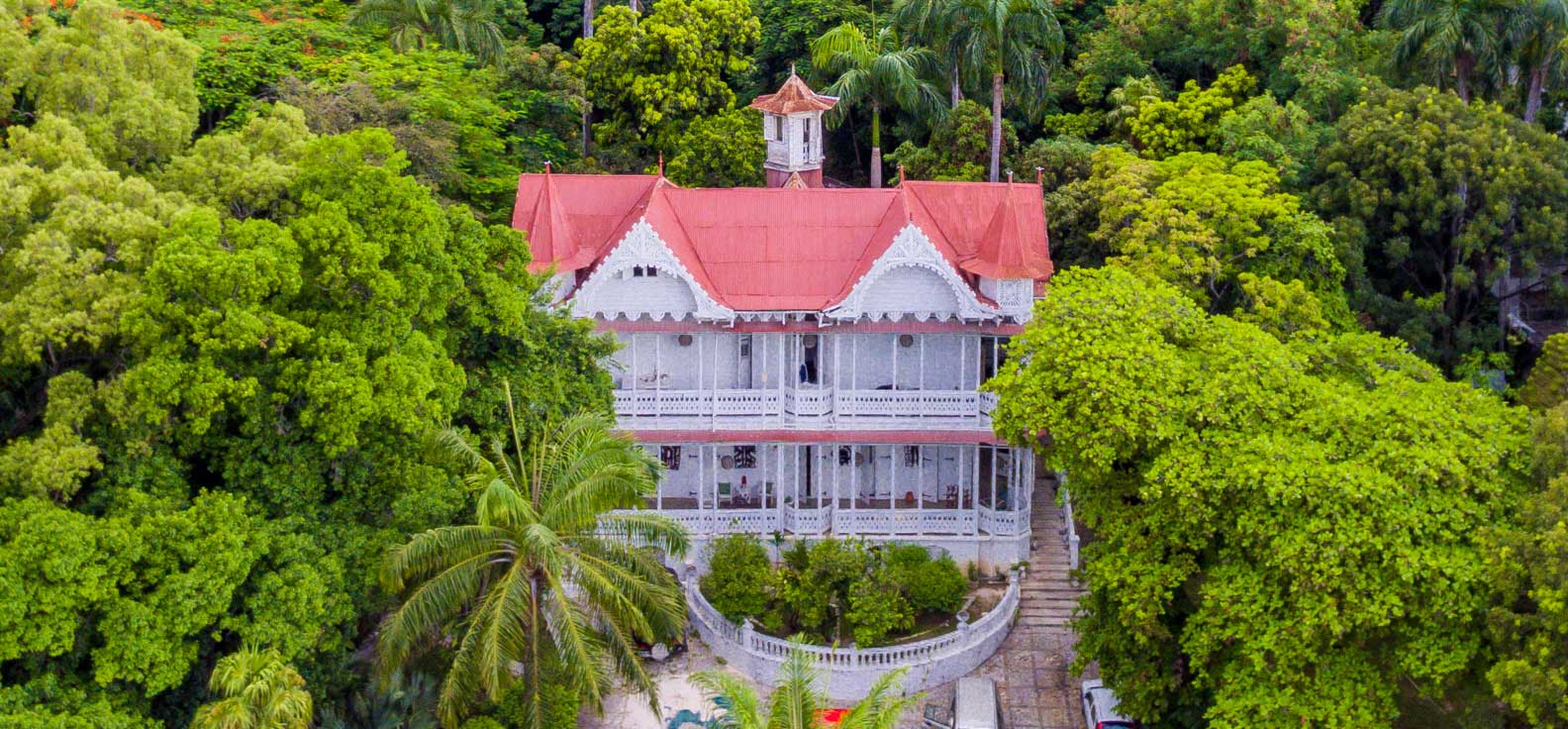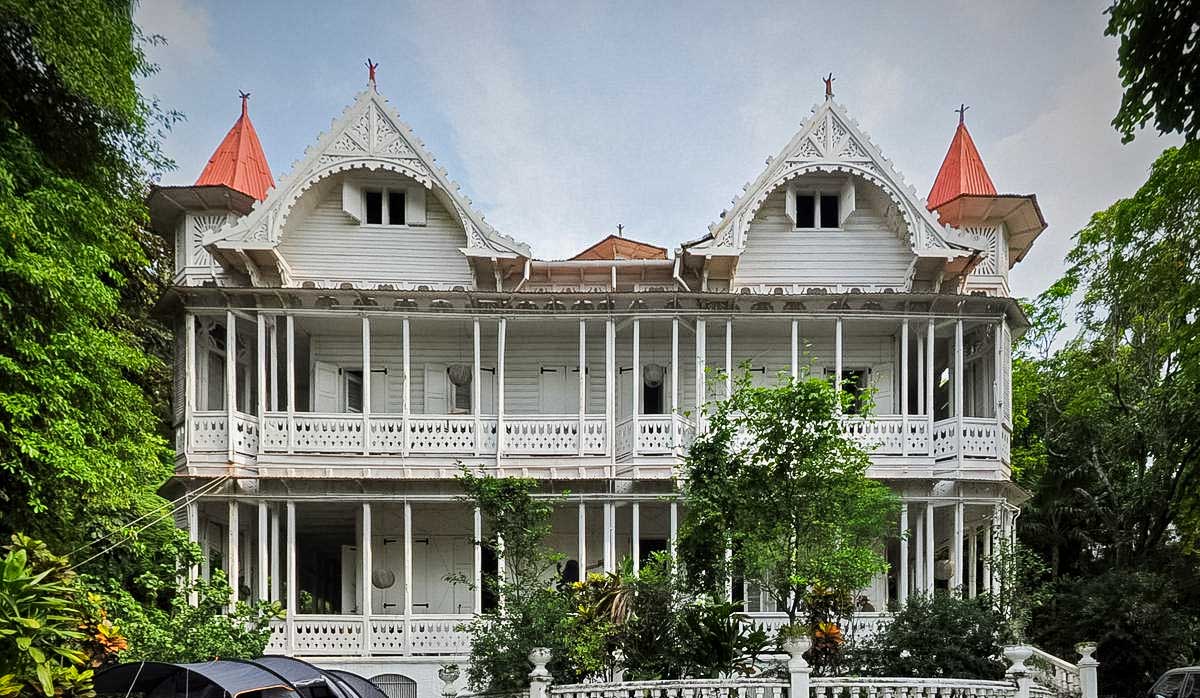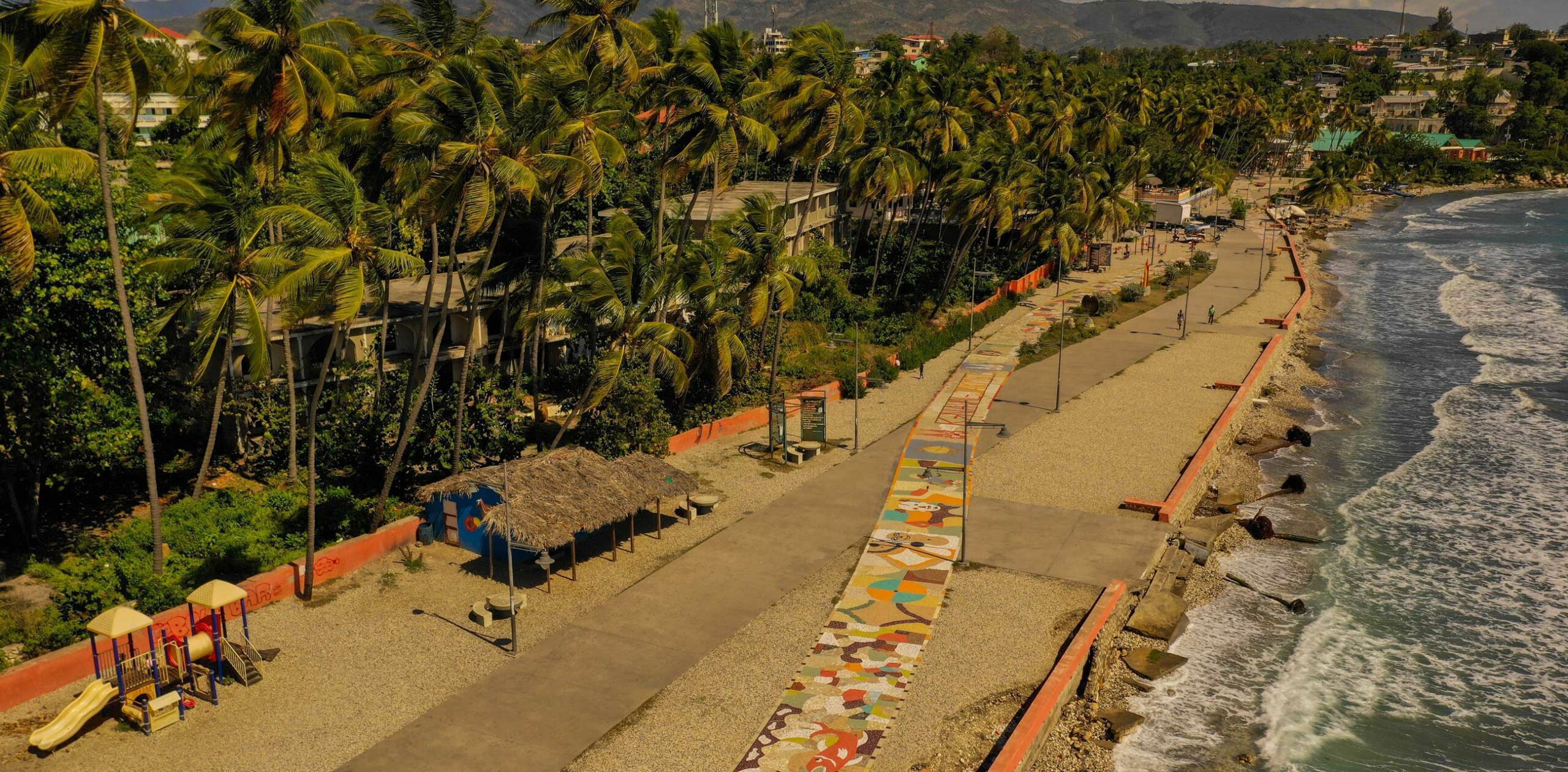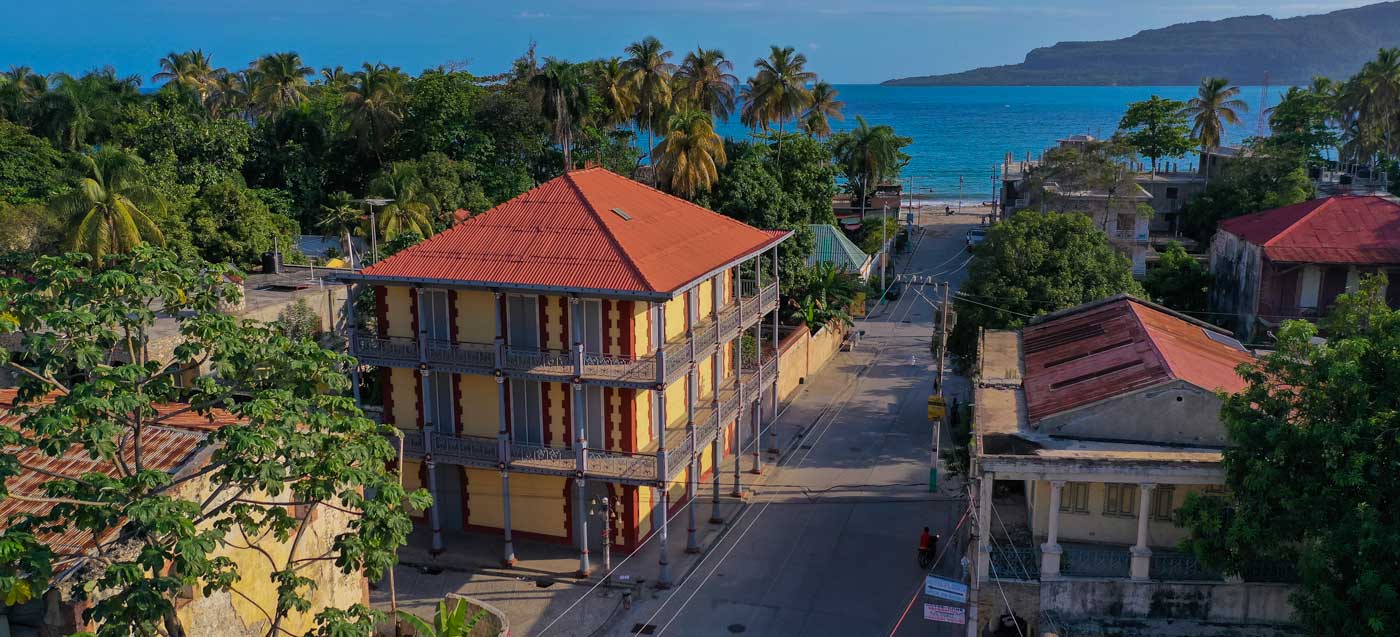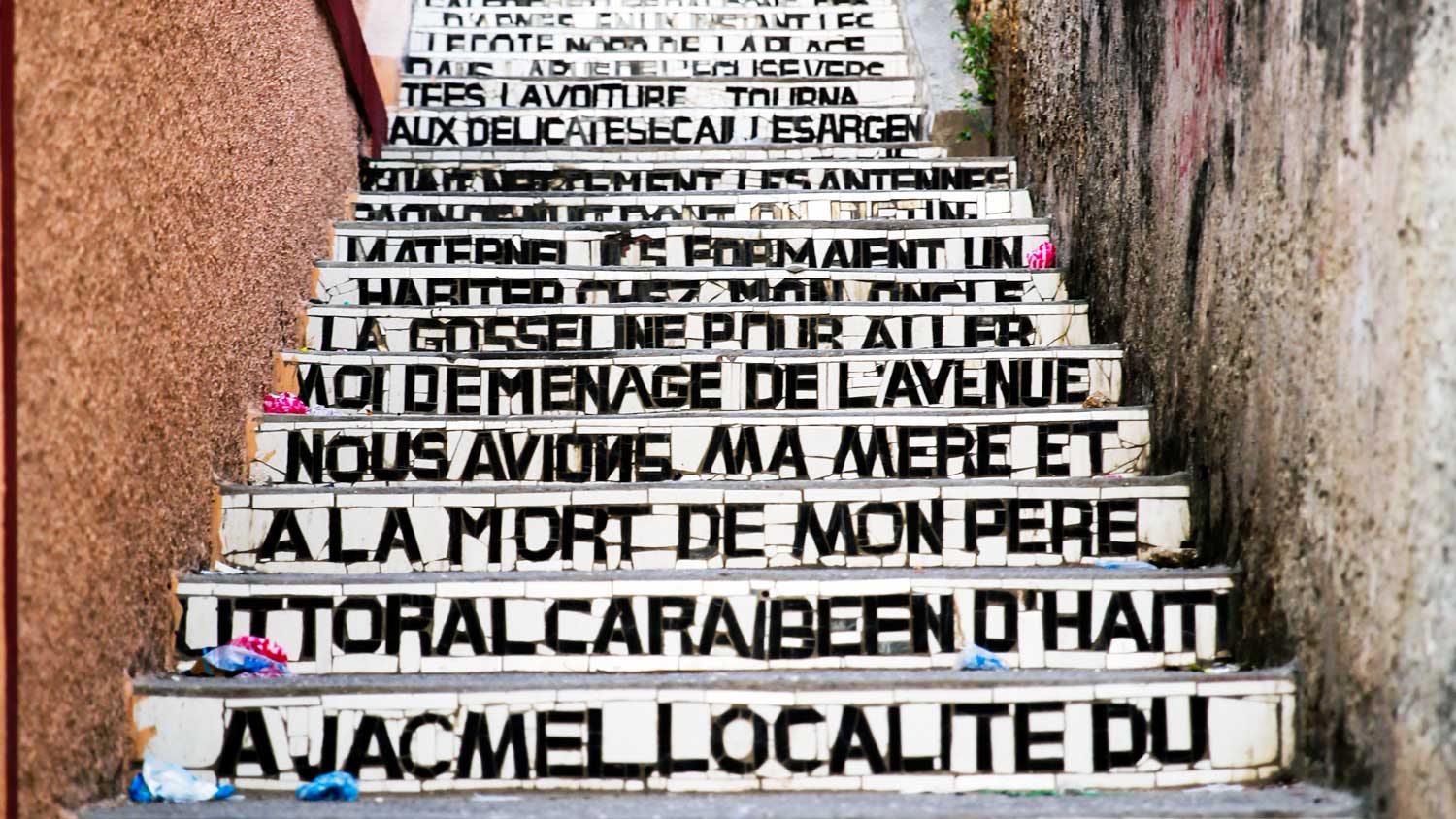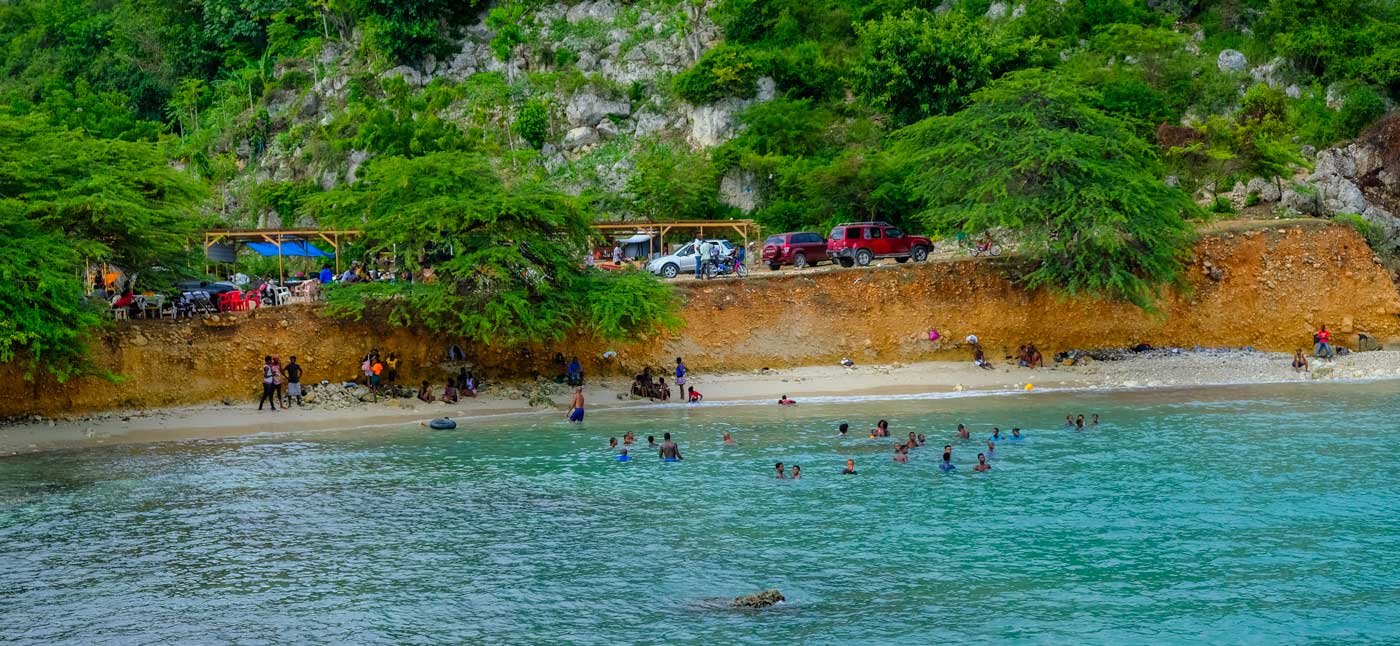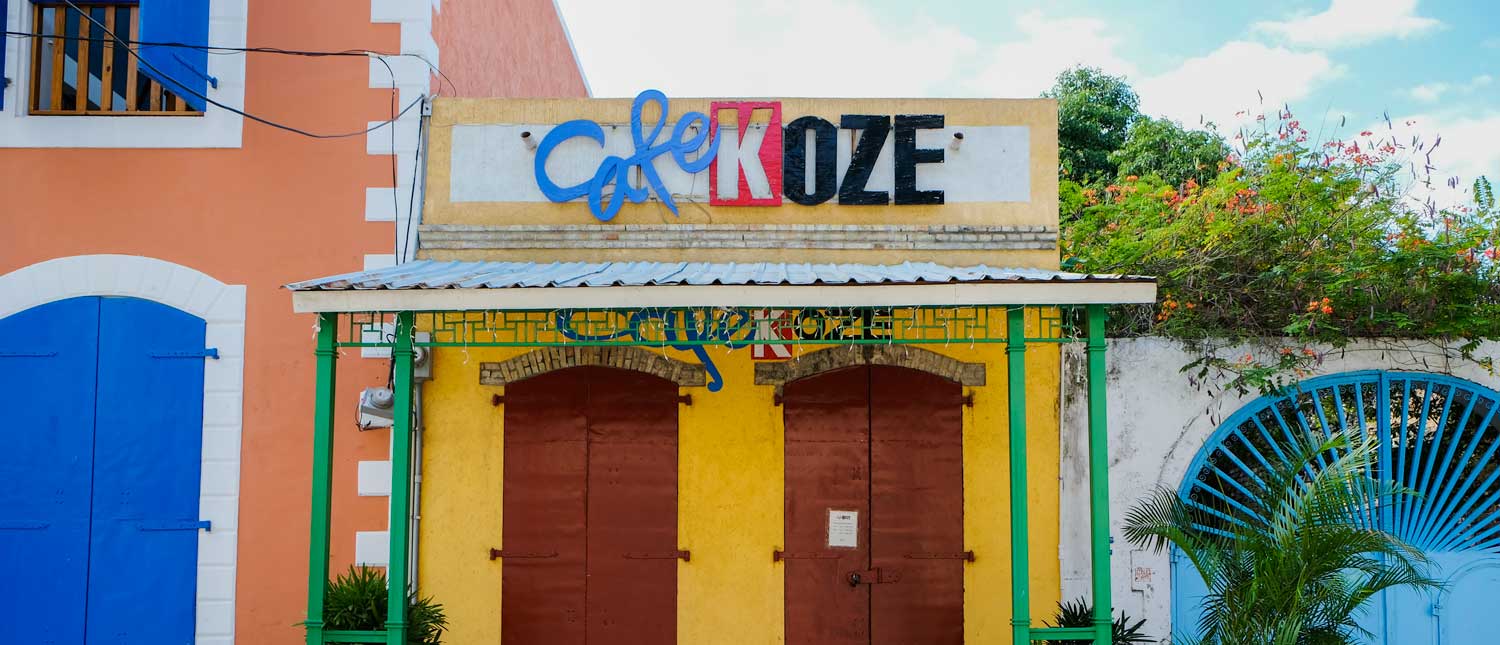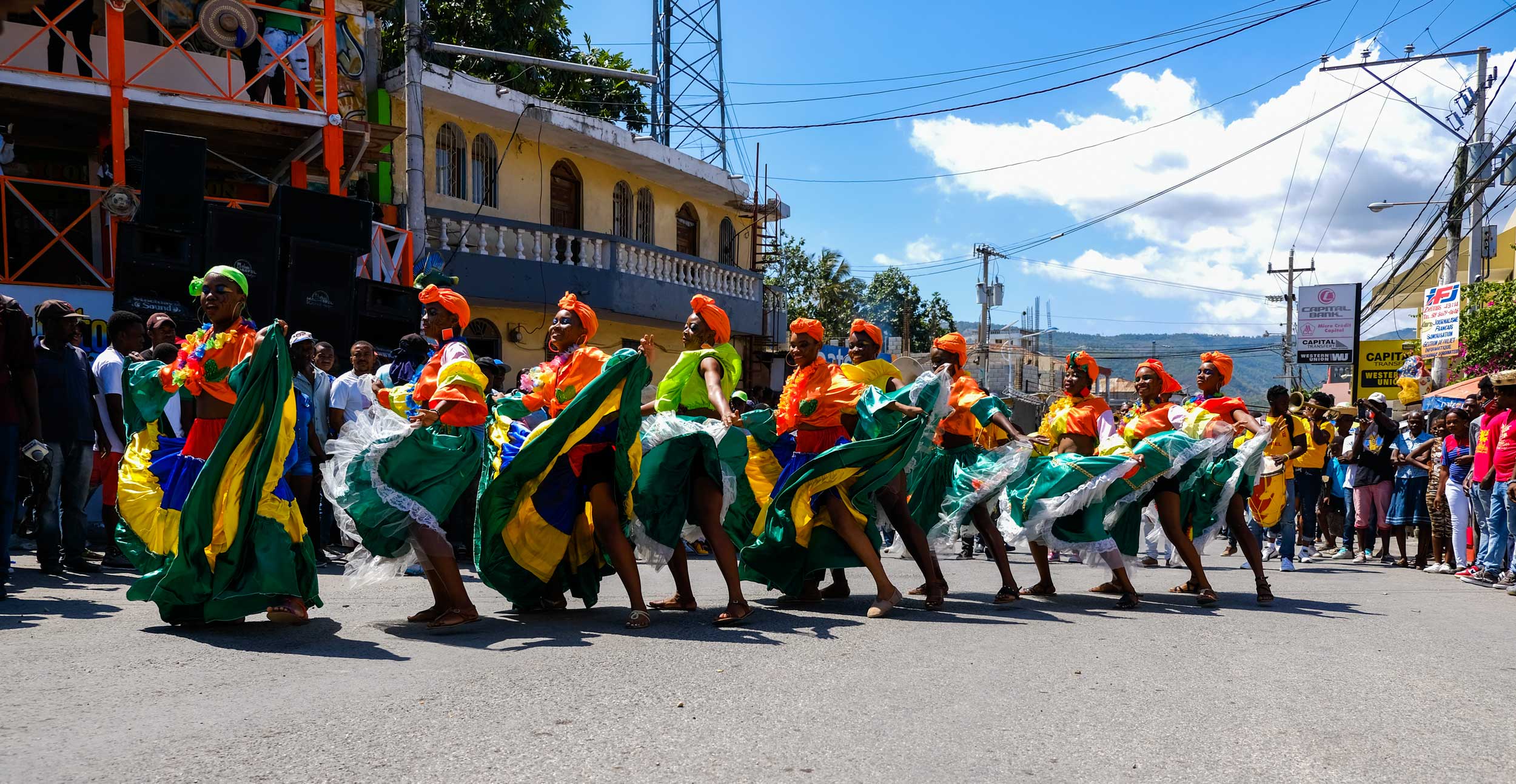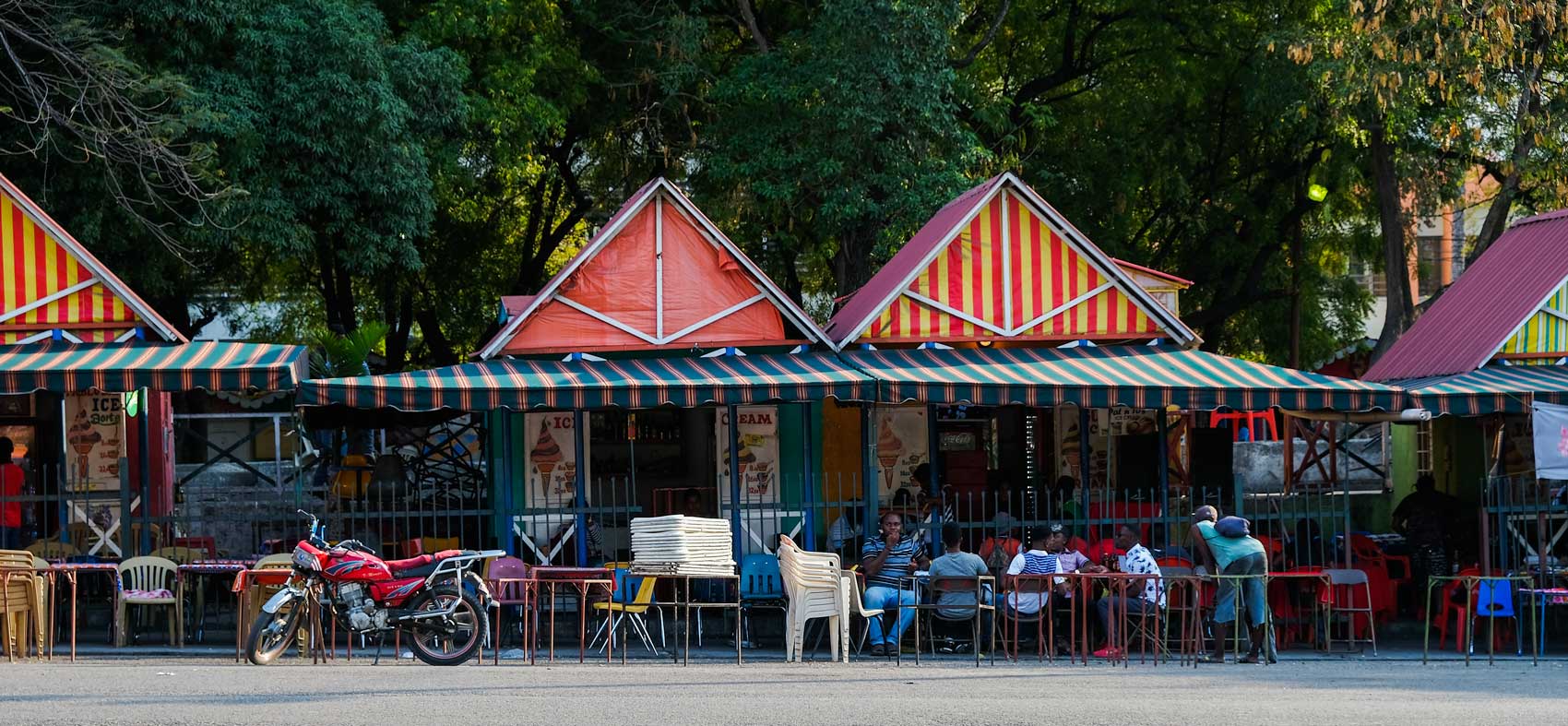
Photo: Franck Fontain
Champ de Mars
A series of public squares divided by large boulevards, Champ de Mars is a cluster of markets, businesses and theaters. At the centre of it all, is the empty space where the Palais National used to be.
Anyone who grew up in Port-au-Prince has childhood memories of Champ de Mars: family outings, running on the boulevard with their friends, or sitting under the dense tropical trees to discreetly exchange words with a love interest. Champ de Mars has seen generations come and go, witnessed revolutions of cultural and political regimes, monuments built up, and torn down by forces of nature.
For years after the quake, the main attraction in Port-au-Prince was a ghost town. High fences were erected all around and the only way for intrepid travellers to entre was with official permission and a guided tour.
With the rubble cleared away, the fences around Champ des Mars have come down. Foundation stones for the new Palais National were laid in 2018 – an important step for this island nation that is determined to get back on its feet. As of early 2019, the old site of the Palais National is still fenced off, but the rest of Champ des Mars is busier than ever.
Champ de Mars, Port-au-Prince
Photo: Franck Fontain
What’s to see in Champs de Mars?
Statues of Haiti’s founding fathers are here, including Alexander Pétion, Henri Christophe, Jean-Jacques Dessalines, and Toussaint Louverture. The most arresting of them all, though, is Marron Inconnu, the iconic statue of the unknown slave blowing a conch-shell trumpet. Sculpted by Haitian sculptor Albert Mangonès, the statue represents a runaway slave on one knee, arching back to blow into the conch-shell trumpet. In his free hand, he holds a machete; around his ankle is a broken chain. In Haitian history, the sound of blowing into a conch was used to announce a slave’s – or a group of slaves’ – freedom. The statue stands to represent Haiti’s independence from the French.
If history’s what you’re after, the Museum of the National Haitian Pantheon fronts onto the square. Two theatres on Champs de Mars – the Ciné Triomphe and Rex Théâtre – were severely damaged by the earthquake, and the Rex, still boarded up, gives you a sense of what much of Port-au-Prince was like in those first bleak years. The Triomphe theatre fared better and has reopened to the public.
Daytime
Under the eaves of the Triomphe theatre, a long strip of artisans sell their arts and crafts: paintings, necklaces, bracelets, earrings, wooden bowls, metalwork, and more. Interspersed between these artisans street food merchants sell hot food, usually rice and beans, by the Styrofoam box. For an authentic treat, and relief from the Caribbean heat, find a Fresko or snow-cone merchant.
Afternoon
Afternoons here buzz with conversation and music playing from sound systems around the park. On weekdays, white-collar Haitians funnel into Champ de Mars on their lunch breaks from local banks, hotels and government offices, or maybe from their lecturing jobs at the nearby university departments – the Faculty of Sciences, the National School of Arts, the Faculty of Ethnology, and the Haitian-American Institute.
Evening
In the evenings, Place de la Constitution de 1801 fills up with the tables and chairs of opportunistic food sellers. If you linger, a waiter will pull you up a chair and ask “Kisa n ap bwè?” What will you be drinking? Underneath the symbolic 200 steps of the Tour 2004, built to commemorate 200 years of independence, you can grab a beer at Kay Leyo, or Leo’s House; an outdoor bar where employees from the nearby Ministry of Culture – come to enjoy a drink after work. There are several brands of local beer, but the strong lager Prestige is consistently drinkable – as long as it’s cold.
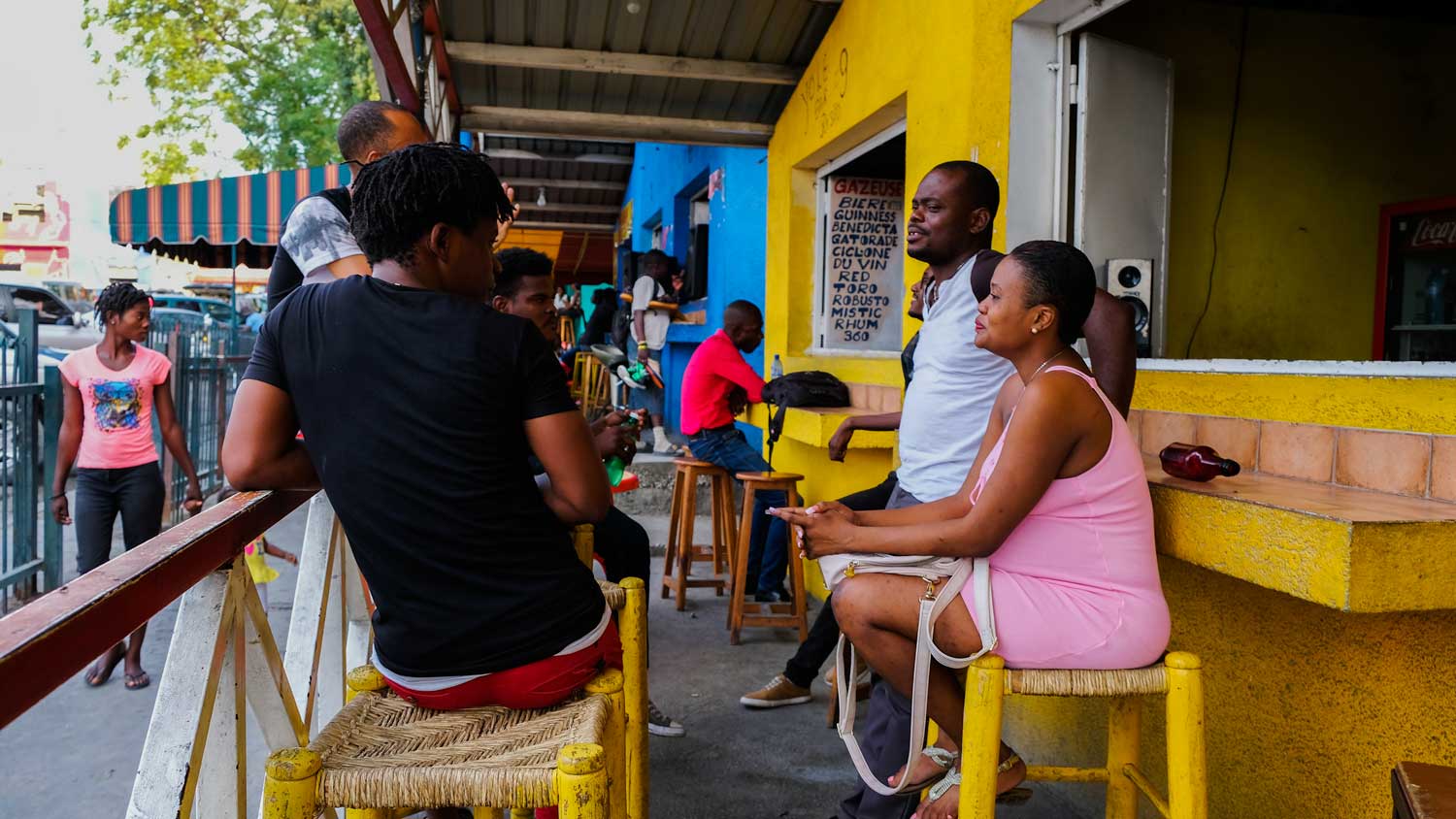
Photo: Franck Fontain
If you’re in Haiti in February or March, Champ de Mars truly blooms during Carnival season
In February, Champ de Mars is the home of Haiti’s Dimanches Précarnavalesques, or Pre-Carnival Sundays. For four weekends leading up to the main event, brightly-clad marching bands bring the streets alive from afternoon until nightfall, parading toward Champ de Mars from places as far as Lalue or Canapé-Vert.
On the final weekend before the three “fat” days of carnival – Sunday, Monday, and Tuesday – Champ de Mars boards up! Construction crews are seen sawing, nailing, measuring, and pushing up against the buildings all the stands that will line the carnival route to offer hundreds of visitors a better view of the parade.
For Carnival, Champ de Mars floods with people crowding the entire carnival route, eagerly waiting for their favorite artist or band to show up, so they can sing and dance along to their new carnival songs. Merchants up and down the route hawk street food, sodas, energy drinks and ice-cold Prestige beers. Moments of euphoria erupt as the floats come into view, washing into Champs des Mars on waves of bass from the sound systems. Return visitors know to pace themselves over the three days of Carnival so that on the last day they can party until sunrise – solèy leve, as it is called here in Haiti.
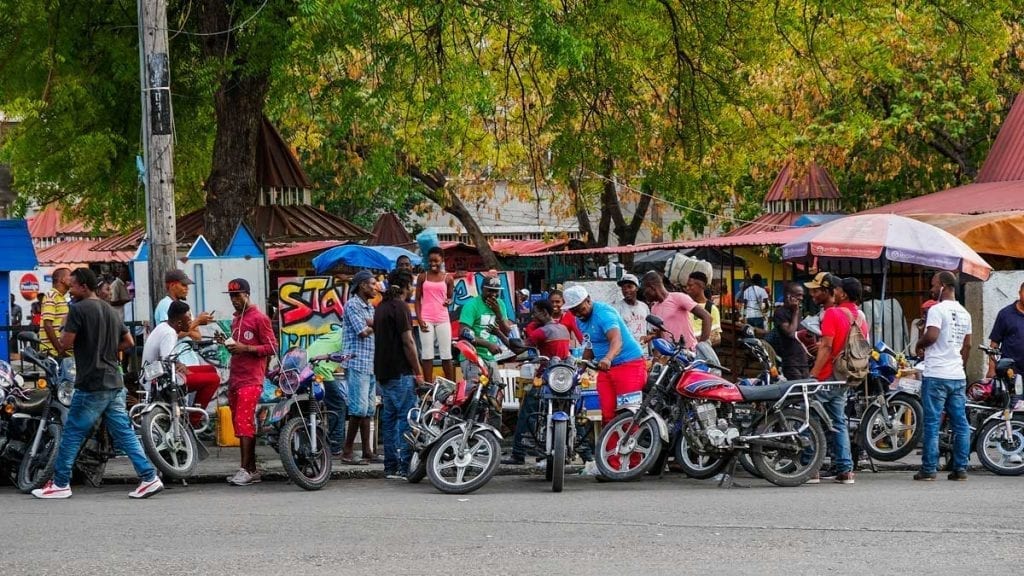
Photo: Franck Fontain
Written by Kelly Paulemon.
Published October 2018
Find Champ de Mars
External Links
Find out more about Champ de Mars on Trip Advisor

Our recommendations

Paradise for your inbox
Your monthly ticket to Haiti awaits! Get first-hand travel tips, the latest news, and inspiring stories delivered straight to your inbox—no spam, just paradise.


